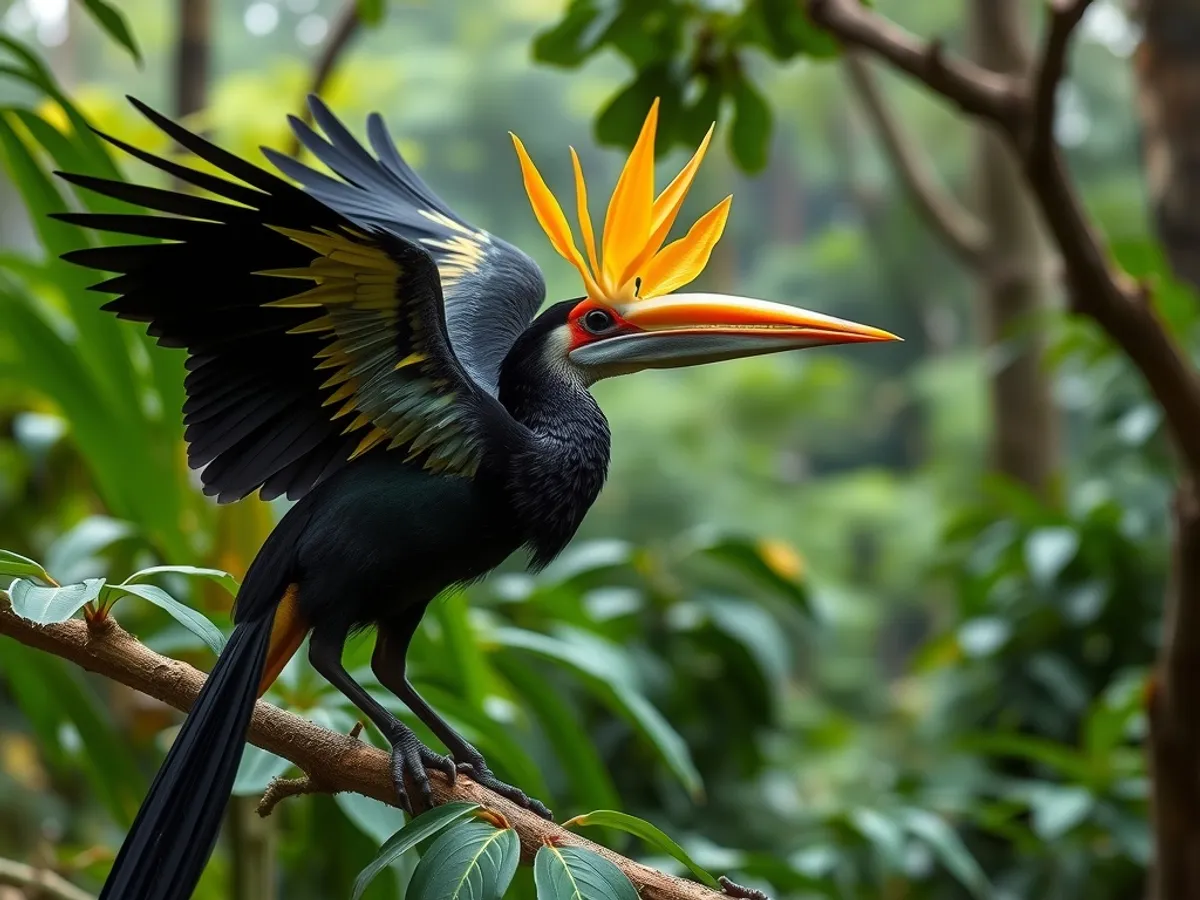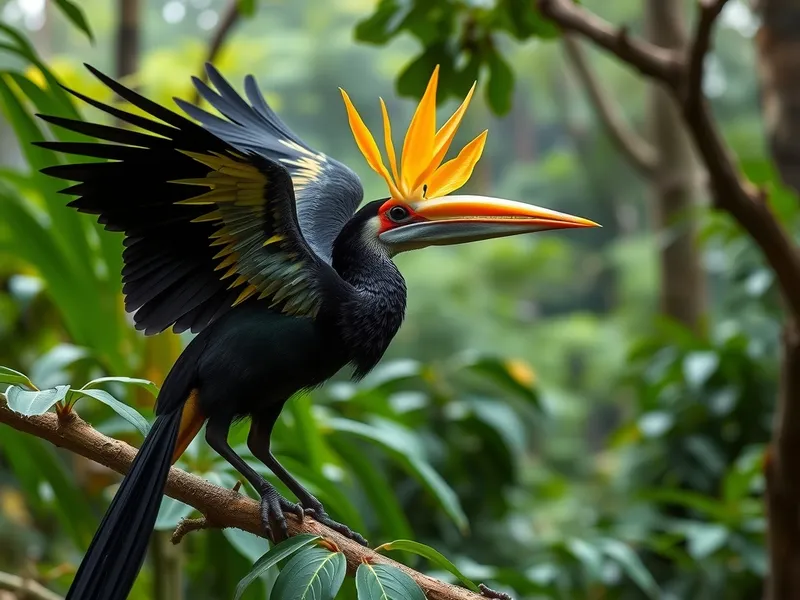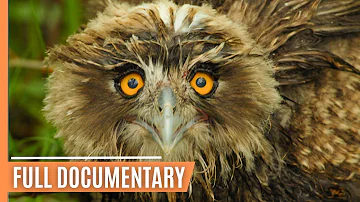
Greater Bird-of-paradise
Paradisaea apoda

Meet the Greater Bird-of-paradise
The Greater Bird-of-paradise is a large, striking bird known for its elaborate plumage and intricate courtship displays. Males possess a dazzling array of yellow and white flank plumes, emerald-green faces, and long tail wires, which they showcase to attract females. Native to the lowland and hill forests of southwest New Guinea and surrounding islands, these birds are social and often gather in leks for communal displays. Their enchanting appearance has made them famous worldwide and, historically, a target for collectors.
Classification
Bird
Habitat
Lowland rainforest and hill forest
Diet
Omnivore
Lifespan
5-8 years in the wild
Conservation
Least Concern
Weight
230-430 grams
📖Fascinating Facts
Spectacular Plumage
Males grow long yellow flank plumes and delicate tail wires, used exclusively during elaborate courtship displays to attract females.
Forest Dwellers
Greater Birds-of-paradise inhabit the tall primary and secondary forests of New Guinea and nearby islands, typically staying high in the canopy.
Vocal Communicators
These birds use a range of calls, from harsh squawks to melodic whistles, especially during display and lekking activities.
📋Detailed Description
The Greater Bird-of-paradise (Paradisaea apoda) is the largest member of its genus, with males reaching up to 43 cm (17 in) in body length, not including the elongated flank plumes and tail wires which can add an additional 30–40 cm. Males are renowned for their extravagant plumage: their head and nape are a vivid iridescent green, the face is a striking emerald, and the back is a rich maroon-brown. Most distinctive are the long, silky yellow and white flank plumes that cascade from the sides, used in elaborate display rituals. Females are more subdued, with brownish upperparts and a lack of ornamental plumes, an adaptation for camouflage during nesting. The species exhibits pronounced sexual dimorphism, with males being larger and more vividly colored. Their robust, slightly decurved bill is pale blue, adapted for a varied diet. The feet are strong and zygodactylous (two toes forward, two back), aiding in perching and display postures. Eyes are yellow, providing keen vision in the dim forest canopy. These birds are highly social, with males gathering in display leks at dawn and dusk, where they perform complex dances and vocalizations to attract females. The species is native to the lowland and hill rainforests of southwest New Guinea and the Aru Islands, typically inhabiting primary forest canopies between 0–700 m elevation.
💡 Did you know?
Despite their showy plumage and displays, Greater Birds-of-paradise are sometimes heard more often than seen, as their calls echo through dense rainforest canopies.
🔬Research & Sources
Wikipedia Summary
The greater bird-of-paradise is a bird-of-paradise in the genus Paradisaea.
Last Modified: 4/27/2025
🎭Behavior & Social Structure
Greater Birds-of-paradise are diurnal and spend most of their time in the upper canopy. Males are polygynous and congregate in traditional display sites (leks), where they perform synchronized movements, fluttering, and dramatic plumage displays while emitting a series of loud, mechanical calls and whistles. These displays are both visual and auditory, designed to attract and compete for visiting females. Outside the breeding season, individuals may forage alone or in small mixed-species flocks. Their omnivorous diet includes fruits (notably figs, drupes, and berries), arthropods, and occasionally small vertebrates. Foraging is primarily by gleaning and snatching food from foliage or branches. They are generally non-migratory, maintaining territories year-round. Social hierarchies among males at leks are established through repeated display success and physical condition.
👶Reproduction & Life Cycle
Breeding occurs during the dry season, typically from May to October, though timing may vary locally. Males do not participate in nest building or chick rearing. After mating, the female constructs a deep cup-shaped nest high in the forest canopy, often 10–20 m above ground, using leaves, vines, and moss. She lays 1–2 pale cream or pinkish eggs, which she incubates alone for about 18–20 days. Chicks are altricial, hatching blind and helpless, and are fed regurgitated fruit and insects by the female. Fledging occurs after approximately 20–30 days, but juveniles may remain near the nest for several weeks. Females may raise one or two broods per season, depending on food availability.
🛡️Adaptations & Survival
The Greater Bird-of-paradise exhibits several remarkable adaptations. Males' elaborate flank plumes and tail wires are evolutionary products of sexual selection, used exclusively for courtship displays. Their strong, zygodactylous feet provide stability during complex display postures. The species' keen eyesight is crucial for detecting predators and rivals in the dense canopy. Their omnivorous diet allows flexibility in resource use, and their digestive system is adapted to process both fruit sugars and animal protein. Females' cryptic coloration and secretive nesting behavior reduce predation risk. Social lekking behavior increases mating opportunities for dominant males while allowing females to select the fittest partners.
📚Research Sources
🎨Cultural Significance
The Greater Bird-of-paradise holds immense cultural significance in New Guinea, where its plumes are traditionally used in ceremonial headdresses and dances, symbolizing beauty, status, and connection to the spirit world. Early European explorers, encountering traded skins without feet, believed the birds never touched the ground—hence the species name 'apoda' (footless). The bird has inspired art, folklore, and scientific curiosity worldwide, becoming an emblem of the region's biodiversity. Its image is often used in conservation campaigns to highlight the importance of rainforest protection.
🔬Recent Research & Discoveries
Recent research has focused on the genetic diversity and evolutionary relationships within the Paradisaeidae family, using molecular phylogenetics to clarify species boundaries and hybridization events. Studies of lekking behavior have revealed complex social dynamics and the role of female choice in driving male ornamentation. Ongoing ecological research monitors the impact of habitat fragmentation on population connectivity. Acoustic analyses have documented the species' diverse vocal repertoire, contributing to understanding of communication and mate selection. Conservation studies are assessing the effectiveness of protected areas and community-based management in safeguarding critical habitats.
🎥Wildlife Videos

20+ Most Gorgeous Birds Of Paradise On Our Planet | Wildlife Documentary | BBTV Official
The dense, ancient rainforests of New Guinea, Australia, and the surrounding islands are home to some of the most extraordinary ...
BBTV Official

Fascinating Colours of the Animal Kingdom | BBC Earth
From a Bowerbird's enticing courtship display to cuttlefish that use camouflage to pursue prey, discover the extraordinary ways ...
BBC Earth

Bird interrupts David Attenborough | Attenborough's Paradise Birds - BBC
'For me birds of paradise are the most romantic and glamorous birds in the world. And this is a film I have wanted to make for 40 ...
BBC

The Secret Lives of Birds and Their Aerial Feats | Full Documentary
We envy birds their mastery of the air, watching them enjoy the freedom of a 3 dimensional space. Flight allows them to get to hard ...
Free High-Quality Documentaries

HDR Video Beautiful Bird of Paradise Nature And National Geographic Documentary
Hay Hay

Greater Bird-of-Paradise
#birdsofparadise #birdsofparadiseproject #cornelllab #birdsofparadise #birdofparadiseproject #birdofparadise #birdofparadise ...
Cornell Lab of Ornithology
🌍Habitat Information
The Greater Bird-of-paradise typically inhabits Lowland rainforest and hill forest environments. Greater Bird-of-paradises have adapted to their environments with specialized features and behaviors.
Primary Habitat:
Lowland rainforest and hill forest
More detailed habitat information will be available soon.
🛡️Conservation Status
The Greater Bird-of-paradise is currently classified as Least Concern. Conservation efforts are crucial for preserving this species for future generations.
Common Threats:
- 🏠Habitat loss and fragmentation
- 🌡️Climate change impacts
- 🎯Hunting and poaching
- 🏭Human-wildlife conflict
⚠️Threats & Conservation Challenges
While currently listed as Least Concern by the IUCN, the Greater Bird-of-paradise faces ongoing threats from habitat loss due to logging, agricultural expansion, and infrastructure development in New Guinea and the Aru Islands. Historically, the species was heavily hunted for its plumes, which were exported for the millinery trade, but international regulations (CITES Appendix II) have reduced this threat. Localized hunting for traditional adornments persists in some areas. Climate change poses a long-term risk by altering forest structure and food availability. Population trends are believed to be stable in remote regions, but declines may occur near expanding human settlements.
🔬Scientific Classification
Scientific Name
Paradisaea apoda
Classification Hierarchy
🔍 About Taxonomic Classification
Taxonomic classification is a hierarchical system used by scientists to classify and organize living organisms based on shared characteristics and evolutionary relationships.
The system moves from broad categories (Kingdom) to increasingly specific ones, with each animal's scientific name typically consisting of its Genus and species.
📝Community Notes
Share your observations and insights about the Greater Bird-of-paradise with our community of wildlife enthusiasts.
Join Our Community
Sign in to share your observations and connect with fellow wildlife enthusiasts.
Sign In to ContributeNo community notes yet
Be the first to share your observations about the Greater Bird-of-paradise!
Explore Greater Bird-of-paradise
Select a tab above to learn more about this amazing animal.
📸Photo Gallery
No photos available for this animal yet.
🌟Discover More Wildlife
Continue your journey of discovery with more fascinating animals from our database
